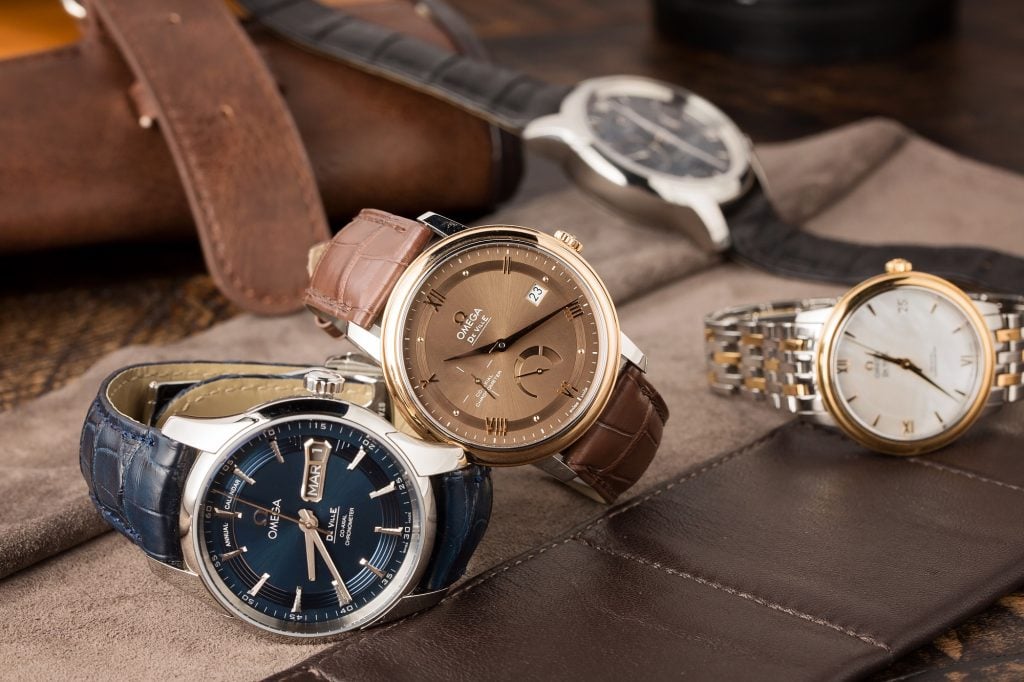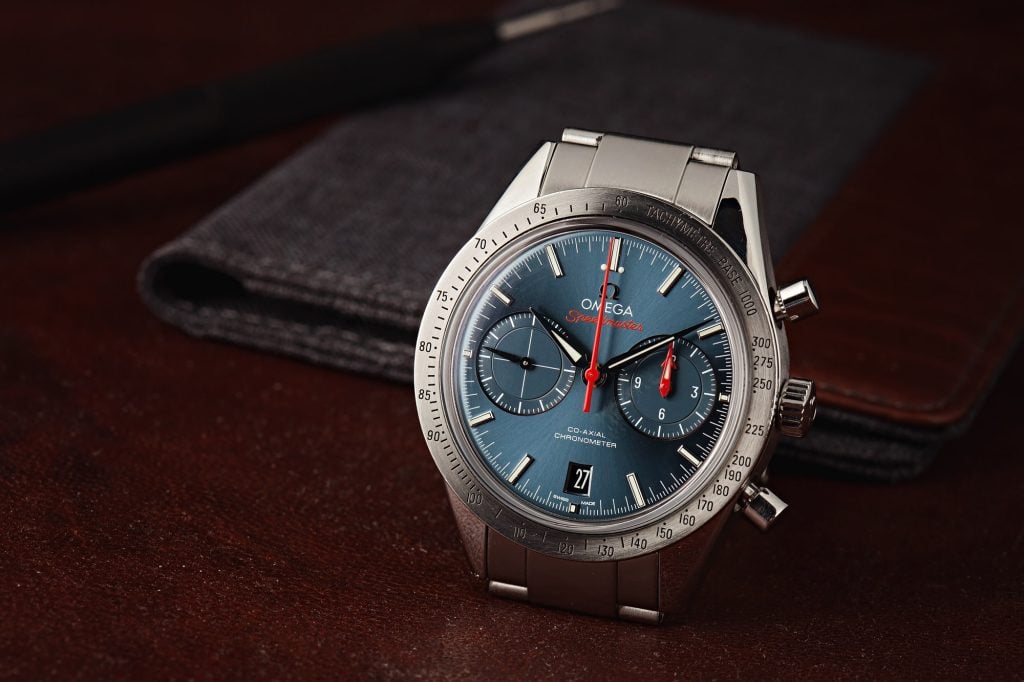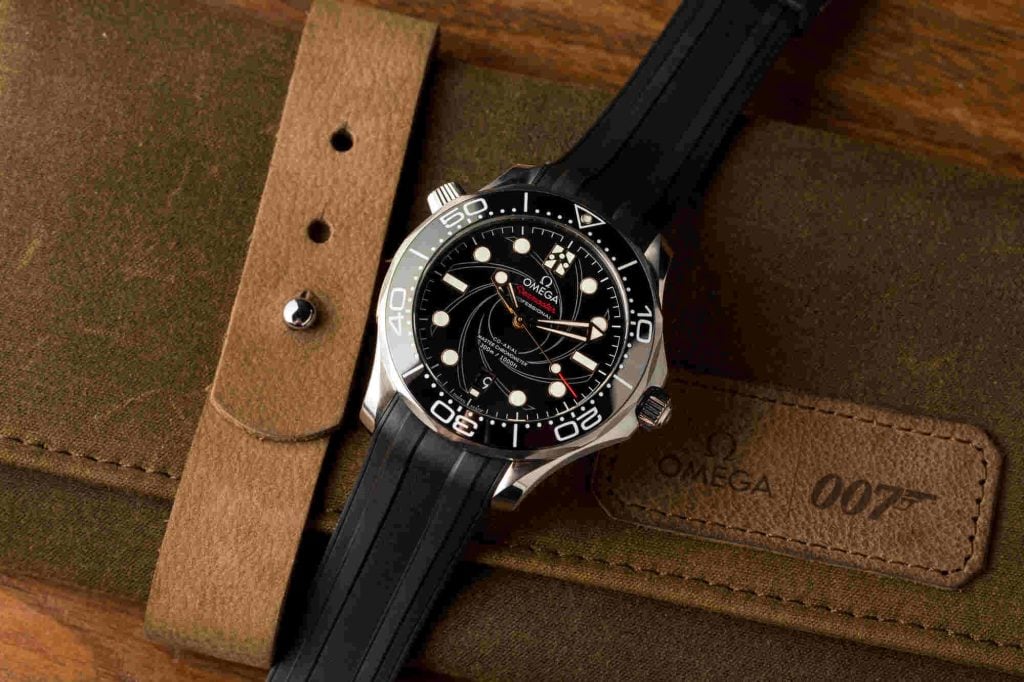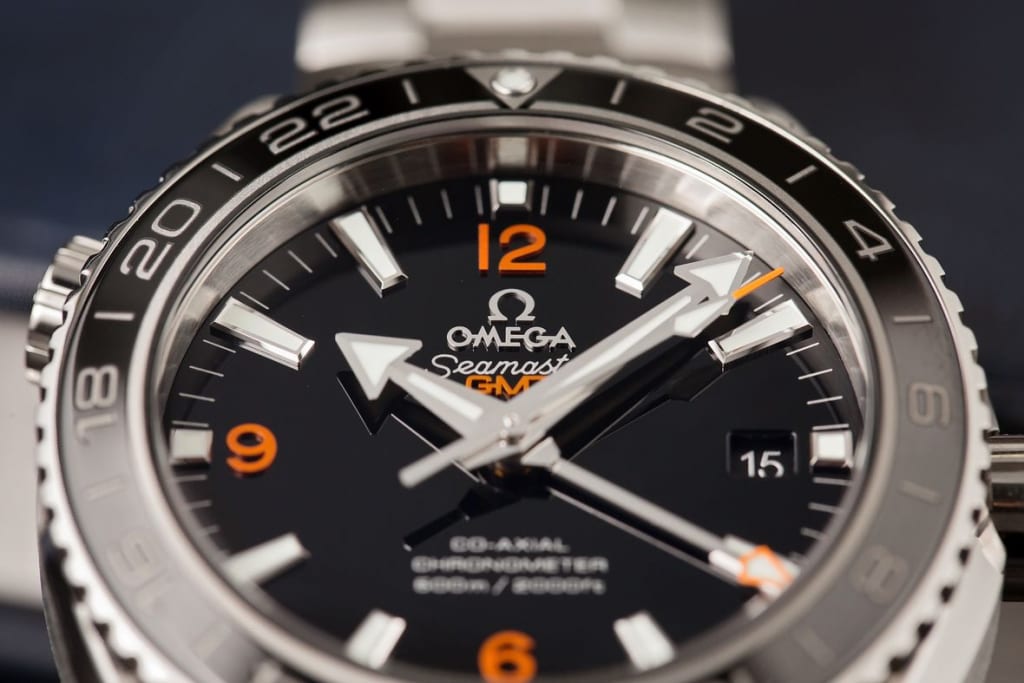How To Authenticate Omega Watches
Step into the world of Omega watches, where timekeeping is not just a necessity but an art form. If you’ve ever found yourself mesmerized by the seamless blend of elegance and precision in an Omega timepiece, you're certainly not alone. Omega watches boasts a rich heritage dating back to the mid-19th century, with its watches adorning the wrists of astronauts, explorers, and style connoisseurs worldwide.
However, in step with Omega's soaring popularity, the market for counterfeit replicas has also flourished. In this comprehensive guide, we’re set to unveil the intricacies of authenticating Omega watches. Whether you're a passionate collector, a first-time buyer, or simply someone who appreciates the craftsmanship behind these horological marvels, grasping the skill of identifying a genuine Omega is paramount. So, get ready as we delve into the world of Omega authentication, ensuring that the Omega watch you proudly wear or contemplate adding to your collection is indeed a true embodiment of horological excellence.
Omega's Legacy of Excellence

The history of Omega is filled with horological innovation and precision, which can be seen within each facet of the brand. Founded in 1848 by Louis Brandt in La Chaux-de-Fonds, Switzerland, Omega quickly made its mark in the watchmaking world. Their commitment to quality and precision led them to produce groundbreaking timepieces, earning Omega numerous awards. One of the pivotal moments in Omega’s journey was the introduction of the Omega Calibre in 1894, setting a new standard for accuracy and reliability in wristwatches.
This innovation earned them a place as the official timekeeper of the Olympic Games in 1932, a partnership that endures to this day. Notably, Omega played a vital role in space exploration, with the Omega Speedmaster becoming the first watch on the moon in 1969 during the Apollo 11 mission. The Seamaster series, introduced in 1948, has also become iconic, known for its robustness and water-resistant capabilities. This blend of heritage, innovation, and precision has made Omega not just a timekeeping instrument but a symbol of style and sophistication.
As we dive deeper into authenticating Omega watches, it's essential to understand this legacy of excellence, as it sets the benchmark against which all Omega timepieces should be measured, ensuring that the watch on your wrist is a true testament to Omega’s enduring commitment to craftsmanship and precision.
How to Check Omega Watch Authenticity By Model

Recognizing a genuine Omega watch requires a discerning eye and an appreciation for the brand’s meticulous craftsmanship. In the upcoming sections, we'll delve even deeper into each aspect, equipping you with the knowledge you need to confidently authenticate an Omega watch. Understanding these critical elements of an Omega timepiece is not only a testament to the brand's commitment to excellence but also a safeguard against counterfeit watches that attempt to imitate the legendary craftsmanship of Omega.
Omega Constellation
Look out for these red flags: When assessing whether an Omega Constellation watch is genuine, several details are crucial to examine. Firstly, the dial should be flawless, with sharp and even printing of the logo and indices; any inconsistency or misalignment could indicate a fake. Incorrect or misaligned star and constellation pattern on the dial. Poor quality or inconsistent finishing on the case and bracelet. Inaccurate or missing engravings on the case back. Subpar movement performance or non-Omega caliber.
Omega DeVille
Be wary of these signs: Inauthentic or low-quality materials used in the case and bracelet. Inconsistencies in the dial layout or printing compared to genuine models. Incorrect or missing hallmarks and serial numbers. Rough or uneven finishing on the case and movement. The overall craftsmanship should be impeccable; genuine Omega DeVille watches are known for their precise detailing and superior finish. Look at the dial carefully; the text, including the Omega logo, should be crisp and perfectly aligned, without any signs of poor printing or spacing errors.
Omega Speedmaster
Common indicators of a counterfeit Speedmaster include: Incorrect subdial spacing or placement. Inauthentic tachymeter scale or bezel markings. The tachymeter scale on the bezel should be sharp and perfectly aligned with the dial markings. Subpar quality or finishing on the case and bracelet. Non-Omega or low-grade movement. Lastly, the feel of the pushers and crown should be solid and function smoothly, providing a tactile confirmation of quality materials and construction like what you would find on a real Omega Speedmaster watch.
Omega Seamaster
When differentiating between a fake and real Omega Seamaster, compare the dial, bezel, and hands to genuine Omega specifications. Inspect the quality and finishing of the case and bracelet. Verify the movement's authenticity and performance. Check for correct engravings and serial numbers.
Omega 007
To spot a fake Omega 007 edition, scrutinize the dial for any inconsistencies or inaccuracies in the 007 branding. Verify the quality and authenticity of the materials used. Check for correct serial numbers and engravings specific to the 007 edition. Confirm the movement is a genuine Omega caliber.
Fake Omega Watches Checklist

Ensuring the authenticity of an Omega watch is crucial for any collector or enthusiast. Here are some key aspects to examine:
Logo and Branding
Let's start with the Omega logo and branding. Authentic Omega watches bear a logo that’s not just a design; it’s a statement of quality. Examine the logo closely, paying attention to the details of the emblem. Authentic Omega logos are flawlessly executed, with precise spacing and consistency in font style. It’s often in these minute details that counterfeiters stumble, creating imperfections that give away their deception. Inspect the Omega logo closely, checking for precise spacing, consistent font style, and flawless execution. Counterfeits often have imperfections in the logo.
Movement
Moving on to the heart of an Omega, the Omega movement is a telltale sign of authenticity. Omega is renowned for its impeccable movements, and genuine watches will have caliber markings that align with the brand’s standards. Take the time to inspect the movement's craftsmanship, ensuring it exhibits the precision and attention to detail that Omega is known for. Genuine Omega watches have impeccable movements with caliber markings that align with the brand's standards. Examine the movement's craftsmanship for precision and attention to detail.
Dial and Hands
The dial and hands of an Omega are like a canvas for horological artistry. An authentic Omega watch will have a dial that’s not just visually stunning but also incredibly accurate in terms of design and alignment. The numerals, hour markers, and other dial elements should be crisp and legible, with no irregularities in printing. The hands should match Omega’s specifications perfectly, with no discrepancies in size or shape. As we explore further, examining the case and case back is crucial. Pay close attention to the material and finish – authentic Omega cases are built with quality in mind, often utilizing stainless steel, gold, or other high-grade materials. Look for crisp, legible numerals and hour markers, with no irregularities in printing. The hands should match Omega's specifications perfectly in size and shape.
Case and Case Back
Pay attention to the material and finish, as authentic Omega cases are made with high-quality materials. Check for engravings and serial numbers that match Omega's standards. Additionally, look for engravings and Omega serial numbers on the case back, which should match Omega’s standards for legibility and precision. These engravings often include essential information, such as the watch’s model number and reference, providing valuable authentication clues.
Crystal
The crystal, whether sapphire or mineral, should also be genuine and in impeccable condition, with no scratches or imperfections that could obscure the dial. A genuine Omega crystal is designed to provide exceptional clarity and durability, ensuring that you can admire the intricate details of the watch face without any distortion. Lastly, don't forget the crown and pushers, which should exhibit Omega’s meticulous attention to detail, along with proper functionality. The crown, often bearing the Omega logo, should turn smoothly and without resistance, allowing you to set the time precisely. The pushers, if applicable, should engage seamlessly without any signs of wear or damage. The crystal should be genuine, without scratches or imperfections. It should provide exceptional clarity and durability.
Crown and Pushers
When determining the authenticity of an Omega watch, examining the crown and pushers can be very insightful. These should exhibit Omega's attention to detail and function smoothly. The crown should turn without resistance, and pushers should engage seamlessly. Pushers on genuine Omega watches should feel solid and responsive, giving a satisfying click without sticking or feeling loose. Additionally, the finishing on both the crown and pushers should match the quality and color of the case, with no signs of poor plating or mismatched shades.
Bracelet or Strap
Inspect the material and design, ensuring it aligns with Omega's quality standards. The clasp should feature a perfectly engraved Omega logo. As you scrutinize the Omega bracelet or strap, inspect the material and design, ensuring it aligns with Omega's quality standards. Authentic Omega bracelets are often crafted with precision, utilizing materials like stainless steel, gold, or leather, depending on the model. Pay attention to the finish, making sure it reflects Omega’s commitment to excellence. The clasp, whether deployant or buckle, should also feature the Omega logo, which should be perfectly engraved.
Packaging and Documentation
Finally, original packaging and documentation, like the box and papers, can also provide valuable authentication clues. The box should bear the Omega logo and branding, often with intricate design elements that reflect the watch's heritage and quality. Inside, you'll find essential documents, including the warranty card and instruction manual, which should be consistent with Omega's official templates. The box should bear the Omega logo and branding, and include essential documents like the warranty card and instruction manual, consistent with Omega's official templates.
The Pitfalls of Fake Omega Counterfeits

In the quest to own a piece of Omega history, the allure of an Omega watch can sometimes lead us down a treacherous path strewn with counterfeits. Counterfeit Omega watches, though often meticulously crafted to mimic the real deal, pose a significant threat to both your wallet and your appreciation for genuine timekeeping artistry. Commonly found in the marketplace, these imitations exhibit a range of subtle to glaring discrepancies that, when spotted, reveal their true nature.
One of the most noticeable signs of a fake Omega is the quality of materials. When reviewing an Authentic Omega watch you will notice that they are crafted with precision, only utilizing the highest-quality materials. This can be seen in their metals, crystals, and components. Counterfeit versions, on the other hand, often cut corners, resulting in subpar materials that can tarnish, scratch, or break far more easily. Moreover, their logos and engravings tend to lack the meticulous detail present in authentic Omegas. These inaccuracies become apparent upon closer examination.
Beyond just material quality, counterfeit Omega watches frequently betray their deception through inaccuracies in logos and engravings. Authentic Omega watches bear logos with precise spacing and consistent font styles, whereas counterfeits often feature poorly executed logos, with uneven spacing and inconsistent fonts. The engravings on the case back, which should display essential information such as the model number and reference, are often a dead giveaway. Counterfeit engravings may appear shallow, irregularly spaced, or poorly aligned. In essence, they lack the precision and attention to detail that characterize genuine Omega craftsmanship.
However, perhaps the most significant pitfall of counterfeit watches lies in the source from which they are obtained. Unauthorized dealers and unverified online sellers are breeding grounds for counterfeit watches. Purchasing an Omega watch from these sources not only exposes you to the risk of acquiring a fake but also compromises the reliability of after-sales service and warranty support. To safeguard your investment and ensure you're purchasing a genuine Omega, it's crucial to buy from reputable and authorized dealers who can provide the necessary documentation and expertise to authenticate your timepiece. As we delve deeper into this guide, we'll equip you with the knowledge and tools to navigate these pitfalls, empowering you to confidently identify and appreciate the authenticity of Omega watches.
Additional Authentication Resources

As you embark on the journey of authenticating Omega watches, it’s reassuring to know that you're not alone in this quest for precision. Omega, as a brand committed to maintaining its legacy of excellence, provides a wealth of resources on its official website. Here, you’ll find detailed information about their various watch models, movement calibers, and the intricate features that make each Omega unique.
Perusing their online materials can be an invaluable starting point for your authentication journey. Additionally, tapping into the collective wisdom of watch enthusiasts and experts through dedicated forums and communities can offer a deeper understanding of Omega watches and their distinguishing characteristics. These online spaces are treasure troves of knowledge, where passionate individuals share insights, advice, and experiences regarding Omega watches. Engaging with these communities allows you to learn from the experiences of others and gather tips on authenticating Omega timepieces.
For those seeking the utmost confidence in their authentication, professional authentication services can provide an extra layer of assurance. Certified watch experts possess the expertise and tools needed to thoroughly examine your Omega watch, verifying its authenticity and condition. Whether you're looking to purchase a vintage Omega or confirm the authenticity of an heirloom piece, these services offer peace of mind. As we navigate through this guide, these additional resources will complement your understanding and empower you to make informed decisions when it comes to authenticating Omega watches.